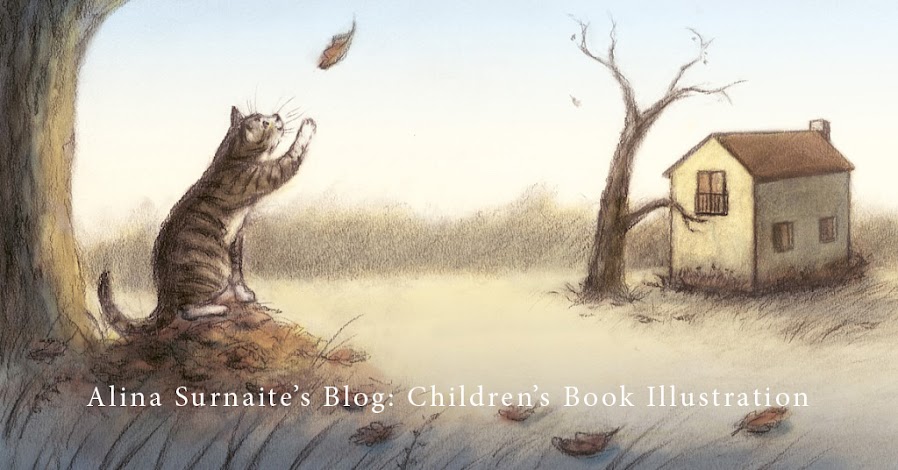Below you can see how my story begins. I'll show the rest of my finished spreads next week.
The author was creating an extraordinary story, but forgot something very important. The main character was missing! What?! How on earth would someone forget something so important? It seems that everything is possible in the creative process. The author started looking for the main character for his story. However, none of the creatures he met was suitable and even worse, they were haunting and annoying him. Did the author give up on his search? He definitely lost his patience at the end. Ironically, rejected characters became part of the author's story, which eventually turns out to be about himself. What a discovery! But the journey doesn't end here since imagination plays a huge role in my book. The reader is welcome to interpret the story as he wants. There are a lot of questions and no obvious answers. The main character is mysterious. There's not a single word in the book describing him. The author describes the characters he meets but we can only guess what they are thinking as they don't speak. We don't know much about the author, but he's the one telling his story to the reader so we follow him along not knowing what to expect. That's exactly how I felt when I was creating this story.
The initial idea for this project was an action sequence with contrasting and interacting characters in a form of a concertina book. I was thinking in adjectives such as big/small, loud/silent, quick/slow. I also had an idea for a character alphabet, but soon abandoned it due to its restrictive educational purpose. I also didn't want to limit my audience to little kids. I aimed at creating unique characters and enjoying the creative process. I understood that it's better to leave more questions and space for imagination than give away all the answers. My thoughts struggled with my feelings, just like the author did with the random characters. I had to embrace uncertainty and use it to my advantage.
While the random spontaneous characters were easy to make, the character of the author was very hard to create. First of all he's invisible like most narrators are and we can only hear what he's saying. At the beginning, he had an arrogant attitude and was complaining directly to the characters how bad they are. I had an image of a character from my previous book to visualize him. At one point, I even used him surrounded by all the characters in a huge final spread. This spread was eliminated when I decided I won't use the same characters twice in my book. It only had twelve spreads without the title page so each one had to be unique. I also didn't want my story to end with an obvious answer so this idea was rejected.
Hey, I wanted to be the main character!
Doesn't look like you belong here...
The main theme of my book is the analysis of creative process, which is a collaboration between thoughts and feelings. It is such a unique experience. It is not something you can repeat again and again. Every time the creative journey is different and unpredictable. There is so much to it that it can't fit in a single book. The main character is found only in the reader's imagination. The book was supposed to challenge thinking, encourage reflection and inspire to experiment.








